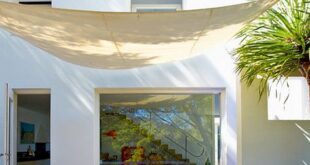Shade gardens can be a challenge for many gardeners, as finding plants that thrive in limited sunlight can be difficult. However, with the right planning and selection of plants, a shade garden can be a beautiful and relaxing space to enjoy. There are many creative ideas for designing a shade garden that can make use of the unique conditions that come with limited sunlight.
One popular idea for a shade garden is to create layers of plants with different heights and textures. By using plants of varying heights, from ground covers to taller shrubs, you can create visual interest and depth in your garden. Mixing in plants with different textures, such as ferns, hostas, and heucheras, can add even more visual appeal to your garden.
Another great way to add interest to a shade garden is by incorporating a variety of colors. While many shade-loving plants have green foliage, there are also many options for plants with colorful leaves or flowers that can brighten up a shady space. Consider adding plants with silver, purple, or variegated foliage to add pops of color to your garden.
In addition to plants, incorporating elements such as paths, seating areas, and decorative accents can enhance the overall look of your shade garden. Stone pathways, wooden benches, and garden ornaments can add charm and functionality to your space. Adding a birdbath or fountain can also attract wildlife and create a tranquil environment in your shade garden.
One way to make the most of a shade garden is by choosing plants that offer year-round interest. Evergreen shrubs, ornamental grasses, and plants with interesting bark or berries can provide visual appeal even when the garden is not in full bloom. Consider adding plants with winter interest, such as hellebores or witch hazel, to keep your shade garden looking beautiful throughout the year.
Finally, don’t forget to consider the specific conditions of your shade garden when selecting plants. Some shade gardens may be dry and others may be moist, so be sure to choose plants that are well-suited to the soil and moisture levels in your garden. By carefully planning and selecting the right plants and design elements, you can create a beautiful and thriving shade garden that you can enjoy for years to come.
















